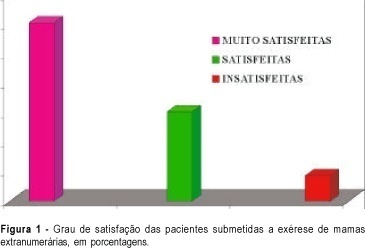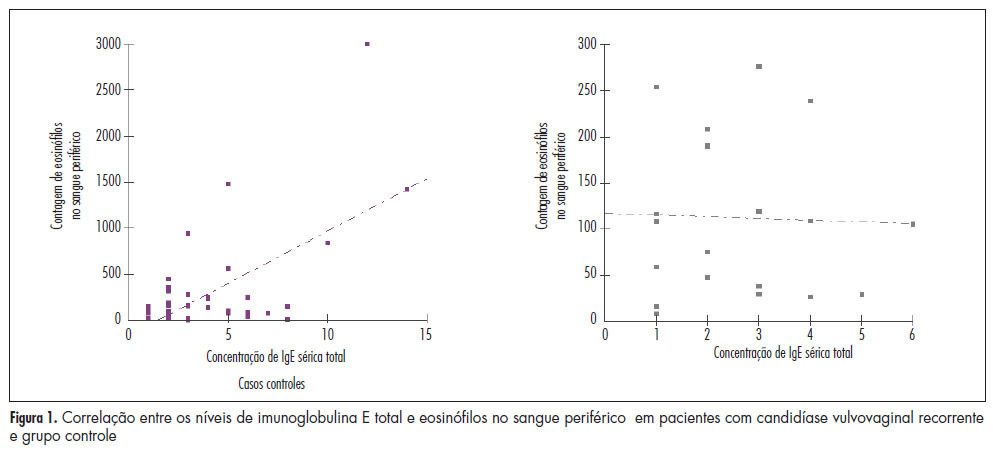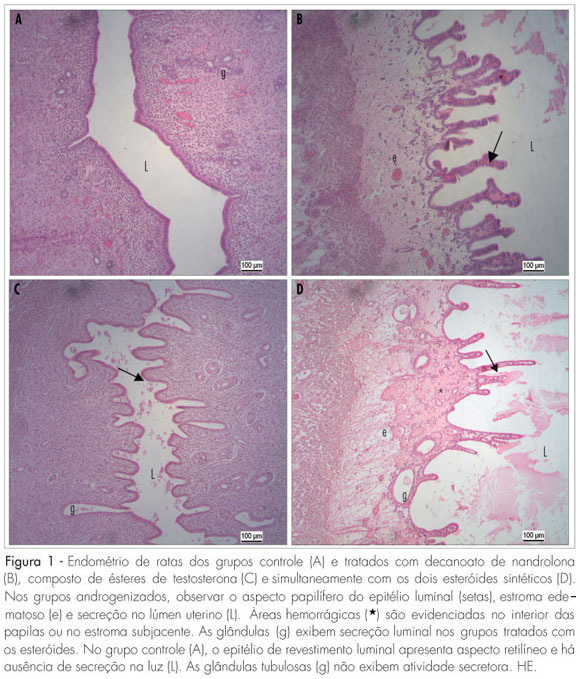Summary
Revista Brasileira de Ginecologia e Obstetrícia. 2022;44(5):452-457
To detect depression during pregnancy and in the immediate postpartum period using the Edinburgh postpartum depression scale (EPDS).
Cross sectional study of 315 women, aged between 14 and 44 years, who received perinatal care at the Leonor Mendes de Barros Hospital, in São Paulo, between July 1st, 2019 and October 30th, 2020. The cutoff point suggesting depression was ≥ 12.
The screening indicated 62 (19.7%) patients experiencing depression. Low family income, multiparity, fewer prenatal appointments, antecedents of emotional disorders, dissatisfaction with the pregnancy, poor relationship with the partner, and psychological aggression were all risk factors associated with depression in pregnancy or in the immediate postpartum period. Antecedents of depression and psychology aggression during pregnancy were significant variables for predicting perinatal depression in the multivariate analysis.
There is a significant association between the occurrence of perinatal depression and the aforementioned psychosocial factors. Screening patients with the EPDS during perinatal and postpartum care could facilitate establishing a line of care to improve the wellbeing of mother and infant.
Summary
Revista Brasileira de Ginecologia e Obstetrícia. 2008;30(9):452-458
DOI 10.1590/S0100-72032008000900005
PURPOSE: to evaluate the experience of Hospital das Clínicas da Faculdade de Medicina de Botucatu da Universidade Estadual Paulista "Júlio de Mesquita Filho", in the follow-up of pregnant women with hyperthyroidism. METHODS: Sixty patients, divided in groups with compensated hyperthyroidism (CHG=24) and with uncompensated hyperthyroidism (UHG=36) were retrospectively studied and compared concerning clinical-laboratorial characteristics and intercurrences. The t-Student test, contingency tables, multiple linear regression and multiple logistic regression with significance level at 5.0% were used. RESULTS: propylthiouracil (PTU) was used by 94.0% of UHG and by 42.0% of CHG (p<0.0001); maternal complications close to delivery have occurred in 20.6% of UHG and in 11.8% of CHG, and UHG presented three fetal deaths, influenced by the mother age, higher level of T4L (lT4L) and of PTU dose (PTUd) in the third trimester (p=0.007); restriction of intra-uterine growth, influenced by lT4L and PTUd in the third trimester has occurred in nine UHG and in three CHG cases, and oligoamnios has occurred in 12 patients (83.3% of UGH and 16.7% of CGH), influenced by age and lT4L in the third trimester (p=0.04); the gestational age at delivery was 34.4±4.6 weeks in UHG and 37.0±2.5 in CHG, influenced by the T4Ll in the third trimester (p<0.05). CONCLUSIONS: the UHG has presented less satisfactory results than CHG, influenced by high lT4L and PTUd in the third trimester, and by more advanced age of some pregnant women.
Summary
Revista Brasileira de Ginecologia e Obstetrícia. 2007;29(9):452-458
DOI 10.1590/S0100-72032007000900003
PURPOSE: to evaluate and to compare the effectiveness of oxybutynin, electrostimulation (ES) and pelvic floor training (PFT) in the management of women with detrusor overactivity. METHODS: a total of 64 women, 35 to 80 years old, were enrolled in this randomized prospective trial. Patients were randomized in three groups: Oxybutynin (n=22), ES (n=21) and PFT (n=21). There were no statistical differences between the three groups with regards to race (p=0.948), age (p=0.747), hormonal status (p=0.813), time of symptomatology (p=0.789), previous surgery for urinary incontinence (p=0.993), or body mass index (p=0.897). Patients were assessed before and after treatment by urodynamic test, a seven-day voiding diary, and subjective response. The duration of the treatment was twelve weeks. For statistical analyses, the Pearson chi2, analysis of variance (ANOVA) and the paired t-test were used. RESULTS: there was a decrease in the urge-incontinence episodes and in the number of pads required in all groups (p<0.05). There was reduction in the frequency of micturition in the Oxybutynin Group (p=0.014). Oxybutynin and ES Groups had reduction in nocturia episodes (p=0.003 and p=0.036, respectively). There were no significant differences in improvement between the three groups (p>0.05). Urgency was resolved in 14 (63.6%), 11 (52.4%) and 12 (57.1%) patients of the Oxybutynin, ES and PFT Groups, respectively, without differences among the groups (p=0.754). Subjectively, 17 (77.3%), 11 (52.4%) and 16 (76.2%) women who had accomplished oxybutynin, ES and PFT, respectively, were satisfied, without differences among the groups (p = 0.142). Urodynamic was normal in 8 (36.4%), 12 (57.1%) and 11 (52.4%) patients of the Oxybutynin, ES and PFT Groups, respectively. This urodynamic analysis revealed no differences between the three groups (p=0.358). The reduction of urge-incontinence correlated with patient satisfaction (p<0.05). CONCLUSIONS: treatments were equally effective; reduction of urge-incontinence was correlated with patient satisfaction.
Summary
Revista Brasileira de Ginecologia e Obstetrícia. 1999;21(8):453-456
DOI 10.1590/S0100-72031999000800005
ABSTRACT Purpose: to evaluate the degree of satisfaction of patients submitted to resection of a supernumerary breast, in terms of esthetics, and the rate of complications. Patients and Methods: twenty-three women submitted to surgical treatment for removal of axillary breast tissue at the Breast Unit of the HC-UFG, between July 1994 and September 1997, were evaluated. Age ranged between 20 and 49 (mean 35 years). Patient complaints included local pain, discomfort and questions on personal esthetics. The patients' satisfaction was evaluated through an interview in which they reported to be very satisfied, satisfied, unsatisfied or regretting the surgery. The HC-UFG team also evaluated each of these patients, considering the cosmetic result as very good, good or poor. Results: according to the evaluation by the patients themselves, 61% were very satisfied and none regretted the surgery. The evaluation carried out by the medical team was stricter, as only 22% of the cases were rated as very good by the evaluators. In terms of complications, there was a 22% incidence of seroma and 13% of infection. Conclusion: the discrepancy among the patients' and doctors' ratings seems to demonstrate that the degree of satisfaction of the patients is higher than that one could initially suppose, a fact that motivates us to carry on offering this treatment modality to those who wish to have it, even considering the relative high rate of complications.

Summary
Revista Brasileira de Ginecologia e Obstetrícia. 2013;35(10):453-457
DOI 10.1590/S0100-72032013001000005
PURPOSE: To quantify the number of defense cells and immunoglobulin E (IgE) levels in peripheral blood sampled from women with recurrent vulvovaginal candidiasis. METHODS: A cross-sectional study was conducted on 60 women, 40 with vulvovaginal candidiasis and 20 controls. The defense cells were identified using an impedance system combined with flow cytometry and total and specific IgE was measured by chemiluminescence. The Mann-Whitney test was used for nominal variables and the Spearman test was used to determine the correlation of IgE concentration and eosinophils in peripheral blood. RESULTS: The number of eosinophils in peripheral blood from patients with recurrent vulvovaginal candidiasis, 302.60 (±253.07), was significantly higher compared to control, 175.75 (±109.24) (p=0.037). Serum levels of total and specific IgE were similar in the groups of women with and without recurrent vulvovaginal candidiasis (p=0.361). However, there was a moderate positive correlation between eosinophils and total serum IgE in the candidiasis group (r=0.25). CONCLUSION: Women with recurrent vulvovaginal candidiasis are more likely to have eosinophils in peripheral blood.

Summary
Revista Brasileira de Ginecologia e Obstetrícia. 2012;34(10):453-458
DOI 10.1590/S0100-72032012001000004
PURPOSES: To assess the quality of life of breast cancer survivors compared to a sample of age-matched healthy women. METHODS: A cross-sectional design was conducted on 199 consecutive breast cancer survivors, one year or more after diagnosis, treated at two large hospitals. The patients were compared to age-matched healthy women consisting of employees and volunteers of the two hospitals. Quality of life was evaluated using the World Health Organization Quality of Life Questionnaire, version Bref (WHOQOL-bref) and socioeconomic, clinical, and treatment data were obtained. The χ² test and a generalized linear model were used for statistical analysis. The adopted level of significance was 5%. RESULTS: The mean age of breast cancer survivors was 54.4 years (SD=10.4) and the average length of time since diagnosis was 5.0 years (SD=4.6). The survivors reported a poorer overall quality of life (p=0.001), and for the physical (p<0.001), psychological (p=0.002) and environment (p=0.029) domains than the comparison group, after adjusting for potential confounders. There was no significant difference in the social relationships domain (p=0.929) between groups. CONCLUSION: The results suggest that many breast cancer survivors experienced worse quality of life assessment than healthy women. This information may be useful to establish strategies to improve the quality of life of women with breast cancer.
Summary
Revista Brasileira de Ginecologia e Obstetrícia. 2009;31(9):453-460
DOI 10.1590/S0100-72032009000900006
PURPOSE: to evaluate the effects of the administration of two synthetic steroids in the uterus morphology and in the reproductive parameters of adult female rats. METHODS: divided into four experimental groups: control (C; physiological solution); treated with nandrolone decanoate (DN; 7.5 mg/kg of body weight); with a testosterone esters compound (T; 7.5 mg/kg); and simultaneously with DN and T (7.5 mg/kg of each steroid), in a single intraperitoneal weekly dose, for eight weeks. Five females of each group were sacrificed and the uterine horns were collected, weighted and prepared for histological and morphometrical evaluation. The remaining rats were mated with normal male rats for reproductive parameters evaluation, composing the groups treated during the pre-gestational period. Another group of 20 female rats were treated during the gestational period (7th-14th days). For data analysis, the Kruskal-Wallis non-parametric variance analysis was used, followed by the test of Dunn or of Student-Newman-Keus (5% significance level). RESULTS: there was a significant body weight increase in the androgenized females (ND: 305±50; T: 280±35; ND+T: 275±30 versus C: 255±22 g; p<0.05). Uterine weight was not affected by the steroidal treatment (ND: 0.6±0.2; T: 0.4±0.04; ND+T: 0.7±0.1 versus C: 0.4±0.09 g). All the androgenized females presented estral acyclicity and endometrium characterized by papilliferous luminal lining, oedematous stroma with hemorrhagic areas and secretory activity. There were changes in the morphometrical thickness parameters of the luminal epithelium, myometrium and perimetrium in the androgenized groups. None of the female rats got pregnant when treated with steroids in the pre-gestational period and the treatment during organogenesis affected negatively the reproductive parameters. CONCLUSIONS: steroidal agents alter the uterine structure and impair fertility and gestational outcome in female rats.

Summary
Revista Brasileira de Ginecologia e Obstetrícia. 2017;39(9):453-463
To assess the knowledge and compliance of health professionals regarding the diagnostic and treatment practices for syphilis in patients admitted for childbirth in public maternity hospitals in the city of Teresina, in the state of Piauí, Northeastern Brazil.
A cross-sectional study was performed in 2015 with obstetricians and nurses working in the public maternity hospitals in Teresina (n = 159) using a selfadministered questionnaire, with 5% of losses and 10% of refusals. The study used 21 evaluation criteria: 13 of them were related to knowledge (5 on serological tests and 8 on treatment adequacy); 8 were related to practices (3 on diagnosis, 4 on treatment, and 1 on post-test counseling). The knowledge of and compliance to the practices was estimated as the proportion of health professionals’ answers that were in agreement with Brazilian Ministry of Health protocols.
The obstetricians were in agreement with twocriteria concerning the knowledge of serological tests, one for diagnostic practices, and one for treatment practice. Among nurses, no single match between actual procedures and guidelines was observed.
Low compliance with the protocols results in missed opportunities for the diagnosis and treatment of pregnant and postpartum women and their partners. Strategies for training and integrating the various professional groups, improved data recording on prenatal cards, and greater accountability of the hospital team in managing the women’s partners are needed to overcome the barriers identified in the study and to interrupt the syphilis transmission chain.